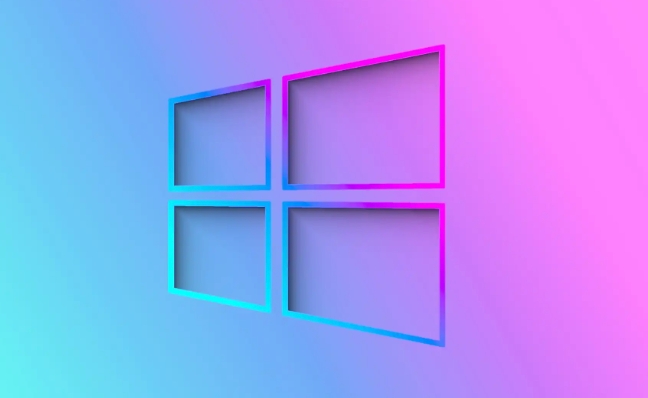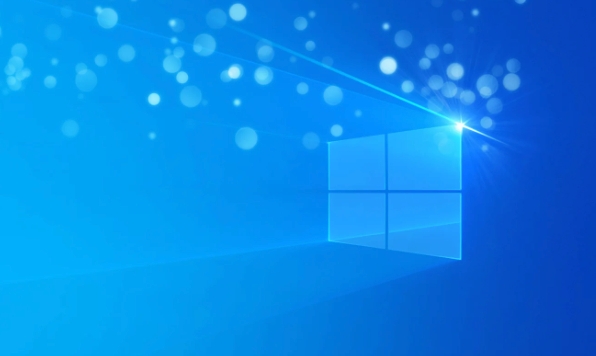The ISO file mount of Windows system can be directly completed through the system's own functions. First, double-click the ISO file to automatically mount it, and the system will assign it an independent optical drive letter; secondly, right-click the ISO file and select "mount" to achieve the same effect, suitable for users who need precise operation; in addition, the system supports mounting multiple ISO files at the same time, each of which is displayed as an independent optical drive. When uninstalling, just right-click the corresponding optical drive and select "Eject" to it, but be careful that the mount content will not be retained after restarting.

It is actually very simple to mount ISO files on Windows and can be completed without third-party software. As long as your system is Windows 8 or later, it comes with a virtual optical drive function, which can mount ISO images with one click.

mount directly using Explorer
This is the most commonly used and fastest method. In Windows, you don't need to install any additional tools, just double-click the ISO file to mount automatically.

- Find the ISO file you want to mount (such as the downloaded system image, software installation package, etc.);
- Double-click to open it, and the system will automatically "load" it into a virtual optical drive;
- At this time, you will see a new optical drive letter in "This computer" or "My computer", which contains the contents in ISO.
This approach is suitable for most users, especially those who just want to temporarily view or install programs in ISO.
Mounting via Disk Image Tool
If you don't want to double-click to open ISO directly, you can also use the right-click menu to operate more clearly.

- Right-click on the ISO file;
- Select the "Load" option;
- The system will mount it into an optical drive device.
This method is essentially the same as the first one, but it gives you more sense of control, especially when you accidentally touch the double-click, using the right-click menu will be more secure.
If you have multiple ISO files to process
Windows allows you to mount multiple ISO files at the same time, each of which will be displayed as an independent optical drive.
- Each time an ISO is mounted, the system will automatically assign the next available drive letter;
- If you want to uninstall an ISO, you can find the corresponding optical drive in "This computer" and right-click to select "Eject";
- Don't worry about resource occupation, mounting will not take up too much system performance.
Note: The mounted ISO will not be automatically retained after restarting and will need to be remounted next time.
Basically these are the operations. The whole process is not complicated but details are easy to ignore, such as not finding the mounted optical drive, or mistakenly thinking that software needs to be installed. In fact, the system has already helped you with everything.
The above is the detailed content of How to mount an ISO file in Windows?. For more information, please follow other related articles on the PHP Chinese website!

Hot AI Tools

Undress AI Tool
Undress images for free

Undresser.AI Undress
AI-powered app for creating realistic nude photos

AI Clothes Remover
Online AI tool for removing clothes from photos.

Clothoff.io
AI clothes remover

Video Face Swap
Swap faces in any video effortlessly with our completely free AI face swap tool!

Hot Article

Hot Tools

Notepad++7.3.1
Easy-to-use and free code editor

SublimeText3 Chinese version
Chinese version, very easy to use

Zend Studio 13.0.1
Powerful PHP integrated development environment

Dreamweaver CS6
Visual web development tools

SublimeText3 Mac version
God-level code editing software (SublimeText3)
 How to solve Rufus ISO image extraction failure issue
Apr 19, 2023 pm 01:04 PM
How to solve Rufus ISO image extraction failure issue
Apr 19, 2023 pm 01:04 PM
Rufus is the best in the industry when it comes to creating bootable USB drives. Just insert your USB drive, browse for the ISO file and click on the "Start" option to start the ISO extraction process, and that's it! But sometimes while Rufus is extracting ISO files, it may stumble upon the error message “Error: ISO image extraction failed”. You must close the error message and retry the entire process again. Fix 1 – Check USB Device and ISO File Before retrying the process, check the ISO file and USB device again. 1. Make sure the USB device is properly connected to your system. You can plug in the drive using the port on the back of the cabinet. 2. The ISO file may have
 How to open iso file on mobile phone
Feb 24, 2024 pm 05:33 PM
How to open iso file on mobile phone
Feb 24, 2024 pm 05:33 PM
With the development of technology, more and more people are now starting to use ISO files. An ISO file is a format of a disc file that usually contains all the contents of the disc, including operating system, software, games, etc. Opening an ISO file on your computer is relatively simple, just use virtual optical drive software. However, when we want to open ISO files on our mobile phones, it may be more troublesome. Well, this article will introduce some methods for you to easily open ISO files on your phone. 1. Using the virtual optical drive application First, we can install
 Unable to delete ISO file opened in system: How to fix it
Apr 16, 2023 pm 02:25 PM
Unable to delete ISO file opened in system: How to fix it
Apr 16, 2023 pm 02:25 PM
What is an ISO file? An ISO file is a file that contains an exact copy of an optical disc, such as a DVD or CD. This type of disc image can be installed on your computer and appear as if you have an optical drive connected to your computer and a CD or DVD containing data inserted into the drive. ISO files can also be used to burn new copies of the DVDs or CDs from which they were created, or simply to contain a large number of files in a single file that is easy to download. ISO files are often quite large; when you're done with them, you'll most likely want to
 5 Ways to Easily Mount an ISO in Windows 11
Apr 19, 2023 am 08:13 AM
5 Ways to Easily Mount an ISO in Windows 11
Apr 19, 2023 am 08:13 AM
Why mount ISO in Windows 11? Mounting an ISO is always more beneficial than extracting its contents. Not only is it super fast, it also helps you save disk while accessing its files quickly and helps save time spent on extracting ISO images. Mounting the ISO (or any other image file, for that matter) also has the advantage of accessing the operating system and other boot drives, which you can test beforehand to make sure they work as expected. How to Mount ISO in Windows 11 You can use the following method to easily mount ISO in Windows 11. Depending on your current preferences, follow any of the sections below. Method 1: Use double-click Windows File Explorer
 Download the Windows 10 22H2 ISO image (offline installer)
Apr 16, 2023 pm 10:16 PM
Download the Windows 10 22H2 ISO image (offline installer)
Apr 16, 2023 pm 10:16 PM
Windows 10 ISO images (version 22H2/November 2022 update) are available for download via the Microsoft website. According to the tech giant, the Windows 10 22H2 ISO with the latest cumulative update applied is available in all editions, languages ??and two formats (64-bit and 32-bit). The Windows 10 version 22H2 update was released in November 2021, and Microsoft has confirmed that the update is now widely available. This means that most users manually
![You don't have permission to mount the file [FIXED]](https://img.php.cn/upload/article/000/000/164/170824952191099.jpg?x-oss-process=image/resize,m_fill,h_207,w_330) You don't have permission to mount the file [FIXED]
Feb 18, 2024 pm 05:45 PM
You don't have permission to mount the file [FIXED]
Feb 18, 2024 pm 05:45 PM
If you encounter permission errors when mounting an ISO image, this article may help. The error message is as follows: The file cannot be loaded. You do not have permission to load the file. Fortunately, you can fix it by following some simple suggestions. Why can't my ISO file be mounted? The ISO file may be corrupted or incomplete, which may cause mounting issues. Other causes include file corruption, storage media failure, or download errors. The ISO file is sparse. Interruption from security software. The disk image is not initialized. Sorry, there was a problem loading the file. The disc image file is corrupted. Fix the error that you do not have permission to mount the file. If you receive the Unable to mount file when trying to mount an ISO image, you No permission to mount file error, please follow these suggestions: Check the file
 Windows 11/10 file mount failure problem solution: Fix the error.
May 08, 2023 pm 01:10 PM
Windows 11/10 file mount failure problem solution: Fix the error.
May 08, 2023 pm 01:10 PM
If users want to back up their entire disk drive or a specific drive, they strive to build an image copy that contains all their data, and this image file is called an ISO file or image. Most Windows users, when trying to mount these types of files on their system, throws an error window saying "Sorry, there was a problem mounting the file" and does not allow them to mount the image file to extract its data . There are many possibilities for such errors to occur on Windows systems, some of them are listed below. The ISO file may already be installed on the system. ISO files must be sparse. It may be blocked. The ISO file read-only option is unchecked. A MicroSD card inserted during installation may interfere with the system
 How to decompress an iso file
Feb 19, 2024 pm 04:07 PM
How to decompress an iso file
Feb 19, 2024 pm 04:07 PM
An ISO file is a common disc image file format that is typically used to store the entire contents of a disc, including files and file systems. When we need to access the contents of the ISO file, we need to decompress it. This article will introduce several common methods to decompress ISO files. Decompression using a virtual optical drive This is one of the most common methods of decompressing ISO files. First, we need to install a virtual optical drive software, such as DAEMON Tools Lite, PowerISO, etc. Then, double-click the virtual optical drive software icon






